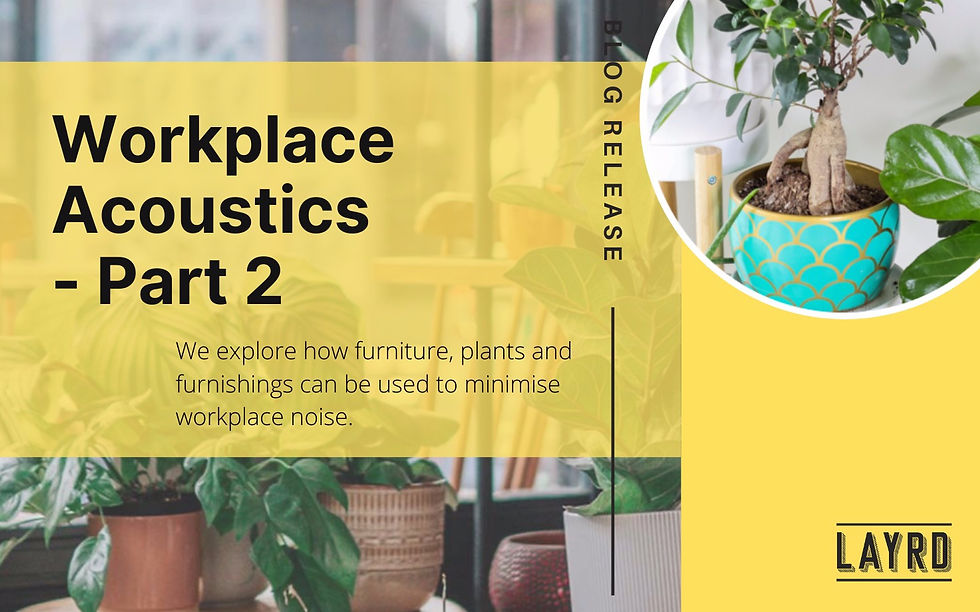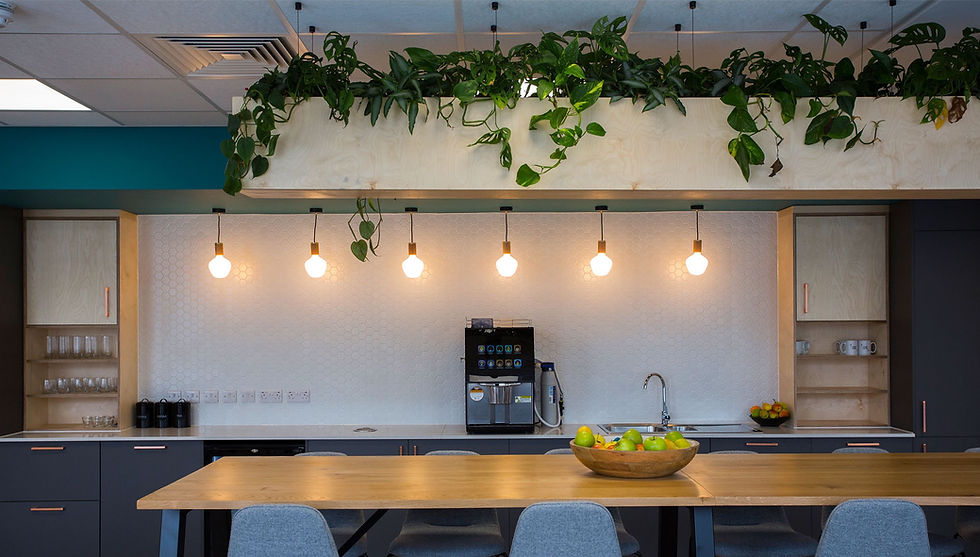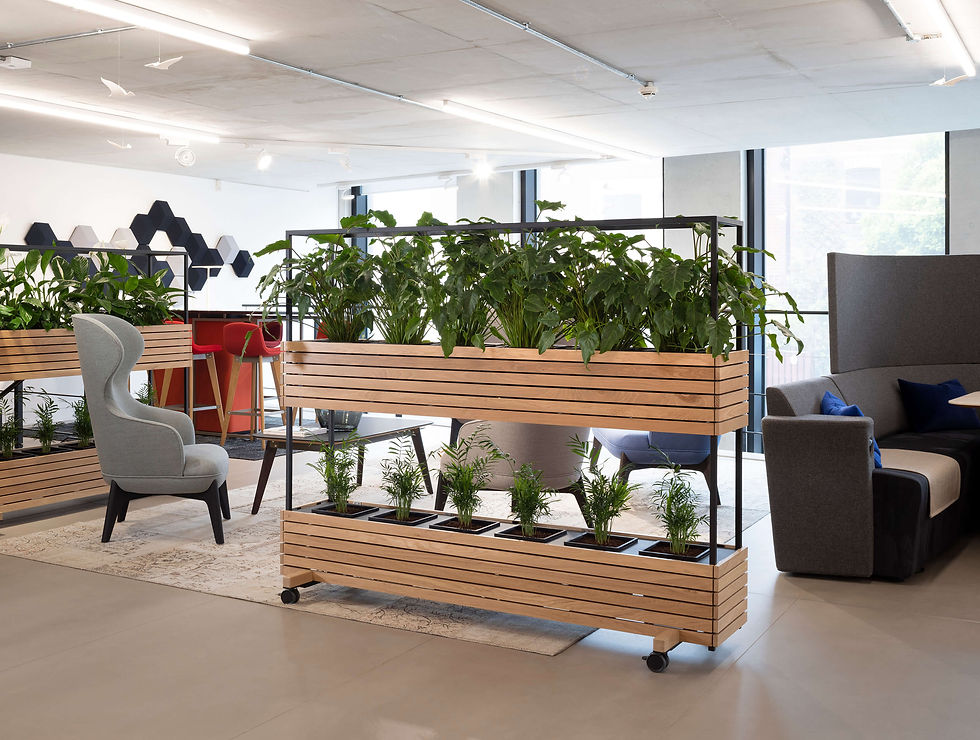Our Guide to Workplace Acoustics: Part 2
- Layrd Design Ltd
- Sep 1, 2021
- 3 min read

In Part 1 of Our Guide to Workplace Acoustics, we explored the impact of noise on wellbeing and productivity, as well as the ways in which structural elements can reduce its effects. However, there’s more to minimising noise than permanent fixtures.
In this article, we turn from the building to its contents, exploring how furniture and moveable objects can also be used to minimise workplace noise and distractions.
Biophilic Elements
The growing biophilic design trend aims to incorporate direct and indirect experiences of nature into the built environment. It seeks to answer the innate human need for connection with the natural world. Done well, it can offer significant health, wellbeing, environmental and financial benefits while improving internal aesthetics.
In the workplace, biophilic design may directly incorporate natural lighting, ventilation, water, views and, of course, greenery. Indirectly, it could include the use of a natural colour palette, along with organic shapes and materials or circadian lighting.
Bringing the outdoors in can also help employees improve productivity, wellbeing and even stress while also reducing noise pollution in shared spaces. In fact, the ability of vegetation to change or reduce sound is an exciting new field of research.
A recent study by Zaloa Azkorra of The UPV/EHU-University of the Basque Country found that green walls have both acoustic and energy efficiency properties. Other research shows that plants and foliage can absorb sound and help insulate against noise. Plus, the organic shapes of foliage can diffuse sound – making it less intense and reducing echoes. In addition, and even more amazingly, plants can convert sound waves into different energy forms, thereby deflecting and reducing noise.

Vegetation Inspiration: Top Tips
Low-maintenance moss walls can last for up to 10 years, requiring no watering or dusting (moss is anti-static!), and effectively absorb sound. If you don’t have a space for a feature wall, consider adding planted room dividers to create a similar effect. They can be used to zone off different workspaces, while deadening sound and soaking up airborne toxins.
Remember, vegetation can also be suspended from the ceiling or hung above desks to break up noise and remove toxins from the atmosphere. Air plants, such as tillandsia, are a great low-maintenance option if you’re unsure where to start.
Not green-fingered or concerned about the expense? Don’t worry! Plant rental companies are increasingly common in the UK. They deliver, feed and water your plants – and even replace them if they die – so you can focus on your day-to-day responsibilities.
Soft Furnishings
Everyone knows that soft furnishings affect the way sound travels, but they also have the added bonus of portability, so they can be updated, reconfigured or moved whenever the mood takes you.
Starting with windows, curtains are a great addition because they break up and absorb sound. If that doesn’t fit with your aesthetic, however, slatted blinds can also help to diffuse noise before it hits the window and echoes around the space.
And although we covered carpets and flooring in Part 1, it’s worth mentioning that rugs have great sound-absorbing qualities. Plus, they can be incorporated into the overall office design to help create different zones, while also adding a splash of colour.
In meeting rooms and retail spaces we often recommend our clients invest in soft seating. By adding upholstered fabrics, sounds can be absorbed, adding privacy and comfort to both spaces. Fabric producers like Camira offer a range of hard-wearing materials with a range of sustainable choices available.

Increasingly, open-plan spaces use innovative design features such as modular shelving to create room dividers that break up areas, disrupt and dissipate noise while creating extra storage solutions and allowing some privacy without blocking light.
And while desk partitions may have a bad reputation, they do help to block and absorb noise, thereby reducing distractions. Options abound on the market, with curved and organic shapes in various colours available – they’re no longer the flat, grey designs of old! Simply find a model and colour that suits your office!
Want to Improve the Acoustics of Your Workspace?
Our friendly team would be happy to discuss your needs and the solutions available. Simply call 01223 952992 or email info@layrddesign.co.uk.

Comentarios